My husbanditor has been pushing me to write a recipe for “Easy Pad Thai” or “Pad Thai for Beginners” for so long, like a year or even longer, even though I had already written an authentic PadThai recipe in 3 episodes here. I kinda don’t want that to be the story of our marriage, but unfortunately I have my own STANDARDS, you know. I don’t want to write anything that could jeopardize the integrity of my national cuisine any further than it has already been ruined by so many pseudo-experts.
Part of my mission is to rescue authentic Thai cuisine from those know-it-all people, who know nearly nothing about Thai heritage, cuisine or culture. I’m salvaging my nation’s heritage plate by plate by giving you the true authentic recipes, and hopefully you will be able to follow my recipe as closely as possible and be able to re-create your favorite Thai dishes in your very own kitchens. (Of course, once in a while I will give you my own invented recipes, too. I don’t eat Thai food every day, and I don’t expect anyone would unless you lived there in Thailand.)
My standard is simple: I won’t post any recipe that real Thais wouldn’t eat! When I cut down ingredients or substitute something in the original ingredient list, it would still be edible by the Thais. So, for me to look at the Pad Thai recipe and try to “simplify” it, it’s impossible, because I wouldn’t call the lesser dish PadThai, and I wouldn’t eat that for sure. Even though I’m cooking and writing a blog about a dish, I don’t just toss the finished product away. We eat it for lunch or dinner, or serve it to our guests here at my house, meaning a real Thai will be eating the dish too!
When I made fresh spring rolls, I bought crabmeat but only used half for the spring rolls. Once you open a container of crabmeat, you want to use it up within a few days at the most. It doesn’t keep very well. So naturally I made a typical Thai dish called “Sen Chan Pad Poo”, just to get rid of the leftover crab.
This was back in January, and I took pictures and all, just in case. My husband LOVED the dish so much, he did something he doesn’t ever do. He took the leftovers to eat for lunch at work! He actually called the dish “Crab PadThai” instead of the real Thai name that might mislead people to think he’s eating something with “Poo” in the name.
It never registered in my mind until he pushed again for an “Easy PadThai” recipe and I remembered this “Crab Pad Thai”. So here we go; I can produce a recipe that requires less ingredients than the typical PadThai, hence “simpler”, still delicious and you can serve this dish to your fussy Thai friends without fear that they will have to run to the bathroom and barf.
Sen Chan is a type of rice noodles or rice sticks. “Chan” is the abbreviated name from Chantaboon or Chantaburi by the current official name. It is a province on the east coast of Thailand, claiming to be the first province who produced the rice sticks or the best quality rice noodles; stretchy, chewy and won’t fall apart in a soup. “Sen” is just the unit name of the noodles or the pronoun of the noodles.
Pad=stir fry (If you have been following my blog, you probably know this word by now). Poo=The imitation Prime Minister of Thailand…Haha…No, I’m kidding. Our first female Prime Minister of Thailand’s nickname is Poo because she is so bad and never really governs the country herself. She gained the position and runs the country with the assistance and orders from her brother, the most corrupt man on earth, who puts Ferdinand Marcos (The Filipinos’ ultra-corrupt president) to shame.
OK. I should leave Thailand political issues only for my Facebook personal wall. Let’s try it again; “Poo=crab”. That’s better, isn’t it?
Sen Chan Pad Poo is simply rice noodles stir-fried with crab meat. With the same set of vegetables used in PadThai, no doubt that might make people assume that it is a PadThai variation. I wrote about it in Episode III of the PadThai Trilogy two years ago.
It does have its own “foundation” that’s different than salted turnip, dried shrimp, tofu and shallots. Even though it contains shallots, they are mushed up with dried chilies and garlic, so the flavor of the dish is quite different.
I personally don’t consider this dish PadThai, but everyone else, even the Thais, would, so I’m not going to go against the grain on this one. It uses fewer ingredients, so I’ll just assume that this is an “Easy PadThai” version. And it uses no egg. Also, you can substitute crab with shrimp, if you want. And if you add cracked peanuts you will get something so yummy and really close to authentic PadThai.
If you prefer not using PadThai sauce pre-made in a jar or bottle, you can go back to my older post “Authentic Pad Thai” to see how to make PadThai sauce, because we use the same sauce here.
Ingredients (serves 2)
For the paste:
Dried red chilies, cut and soak in room temperature water, 1/2 cup or 3-4 pods of California or New Mexico Chilie (Anaheim pepper). You can use higher heat factor chillies, too. This is up to your level of capsicum tolerance.
Garlic 4 cloves or 1 tablespoon, sliced
Shallot 2 heads or 3 tablespoons, sliced
Salt 1/2 teaspoon
For the stir fried noodles:
Fresh thin rice noodles 1-1/2 cups or half a bag, or soak dried rice sticks in room temperature water until they get soft and then measure these soaked noodles
The paste, made from the ingredients above approximately 1/4 cup, or what you made from the above list
Crabmeat 1/2 – 1 cup, or as much as you want
PadThai sauce (follow the recipe here or buy the pre-made sauce) 1/4 cup
Water 1/4 – 1/2 cup (depends on how dry or how wet your noodles are and how thick or thin your sauce is)
Mung bean sprouts 1-1/2 cups (reserve 1/2 cup for serving)
Garlic Chives, cut in about 1 1/2” lengths, 1 cup (reserve the bottom part to eat fresh)
Oil 2 – 4 tablespoons (depends on your wok)
Method:
For the paste, using a food processor of blender:
Put everything in the food processor and push that button. Let the machine run until everything turns into a fine paste. Add water if you need it to keep everything moving.
For the paste, using a mortar and pestle:
1) Start with the chilies and salt, put them in first and grind them until they become a fine paste.
2) Add the shallots, grind them until fine.
3) Add the garlic, grind until fine.
For the noodles:
1) Sort your crabmeat, keeping the big lumps separate, at least 1/4 cup. You don’t want those to break into small pieces.
2) Set the wok over high heat and add oil to the wok. I used 2 tablespoons with my non-stick wok. If I used cast iron, I would use 3 tablespoons.
3) Add the paste to the wok and stir-fry until fragrant.
4) Add the small bits and pieces of crab to the wok and flip it around a few times.
5) Add the noodles to the wok,
then add PadThai sauce and about 2 tablespoons of water to the wok too, tossing the noodles with all the sauce and liquid. Add more water if you see the noodles are getting dry and not cooking yet. Don’t add too much water at once, the noodles will stick together in a big lump, which is not good because the sauce can’t coat the noodles.
Some of the ingredient amounts I gave you are just approximate. Add more if you need it. If your PadThai sauce is very thin, add more sauce and reduce the amount of water. If your PadThai sauce is too thick, add more water and taste-test it to get the right balance before you add more sauce.
If you put in too much water when you were making the paste, use less water to stir-fry the noodles.
Of course, you can add more oil if you see the noodles start to stick together, but make sure you don’t add to much. No one wants oily PadThai.
6) Once all the noodles are coated with sauce, add the reserved chunks of crabmeat to the wok, flip it around a little, then turn off the heat.
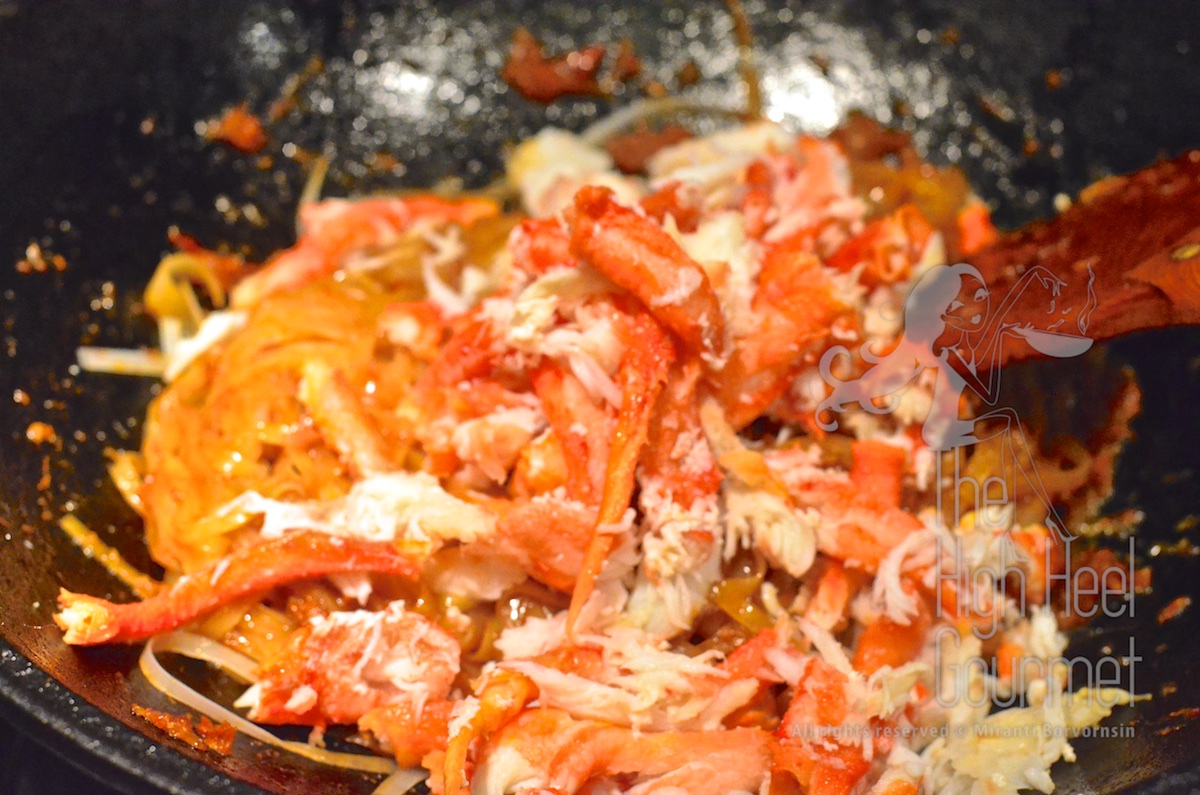
In the whole process I was hurried, trying to cook with the high-heated wok and taking pictures. This is not so clear a shot, but I hope you understand what it is.
7) Add the vegetables, bean sprouts and garlic chives to the wok, using the leftover heat to cook the vegetables.
8) Plate the noodles, garnish with more raw bean sprouts and the bottom parts of the garlic chives. Add crush peanuts on the side, if you want them, and also a wedge of lime.
9) Stop complaining that the recipe is still too complicated and eat your Sen Chan Pad Poo or it will get cold.
Here we go, your Easy PadThai recipe!
What it’s NOT Suppose to be in Pad Thai – Pad Thai Trilogy, Episode I
The Authentic Pad Thai Recipe – Pad Thai Trilogy, Episode II

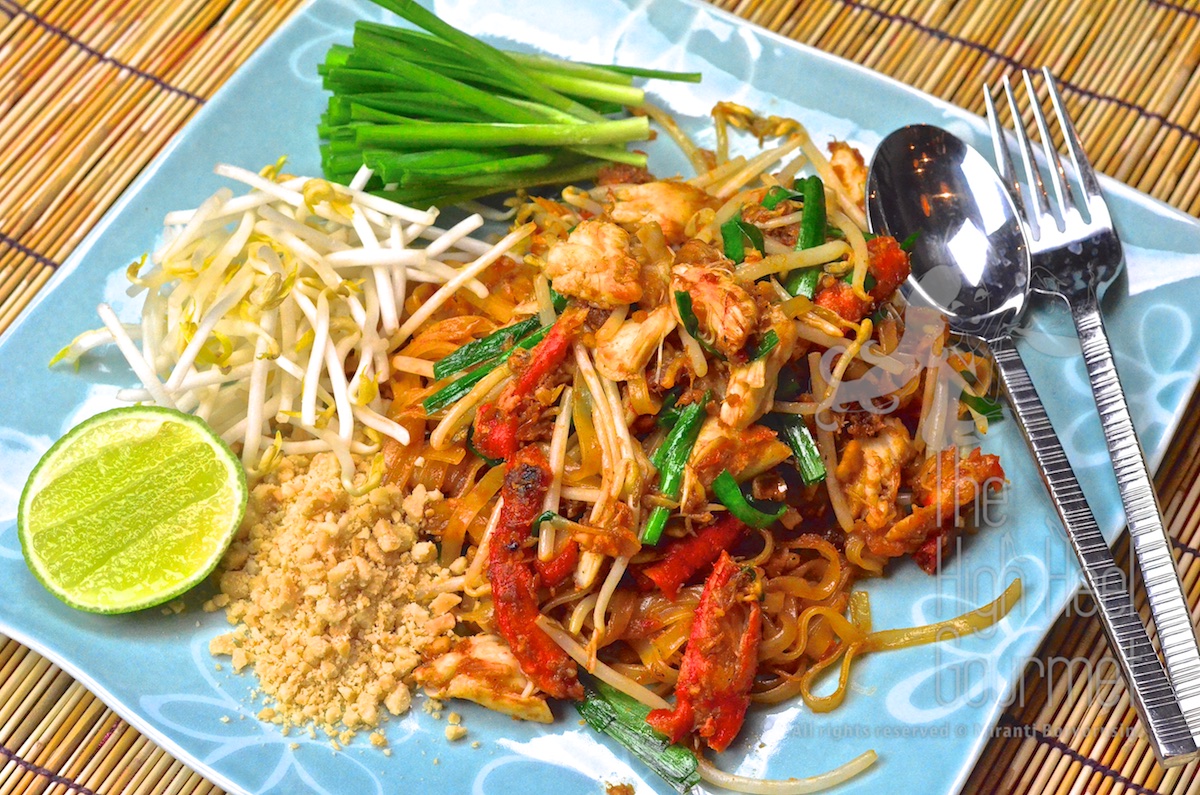
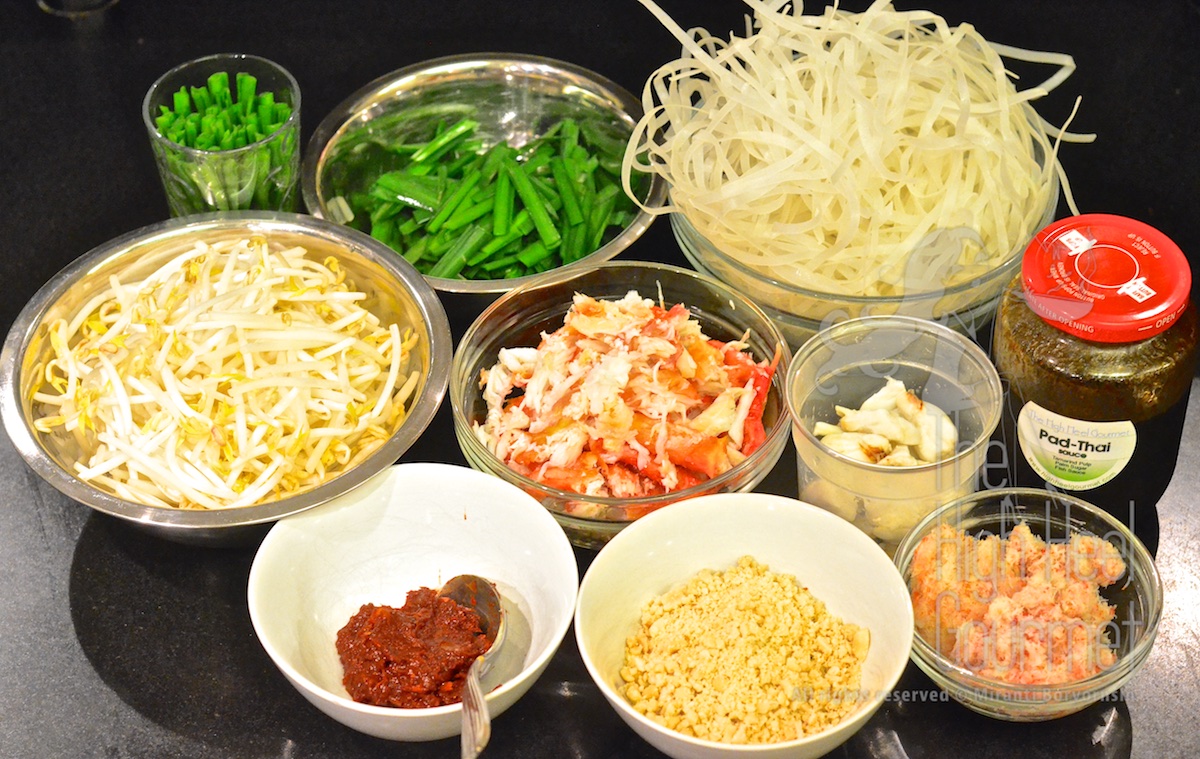
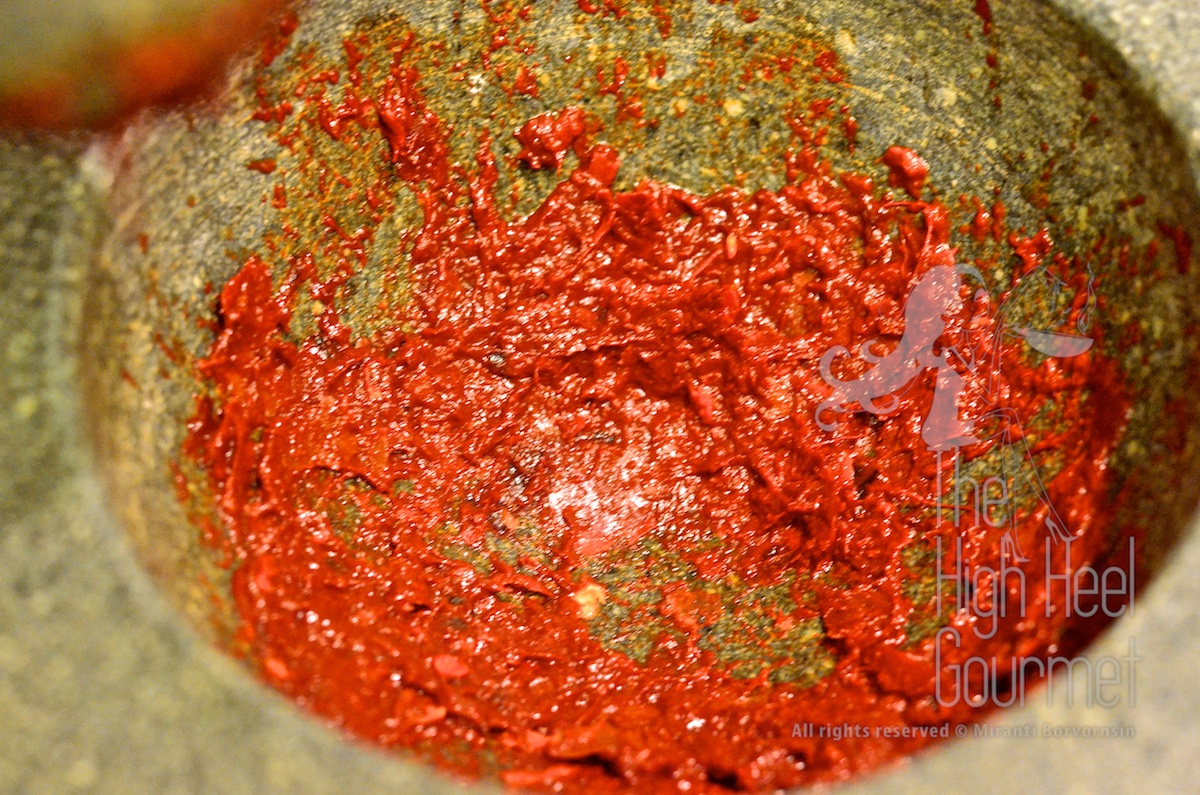
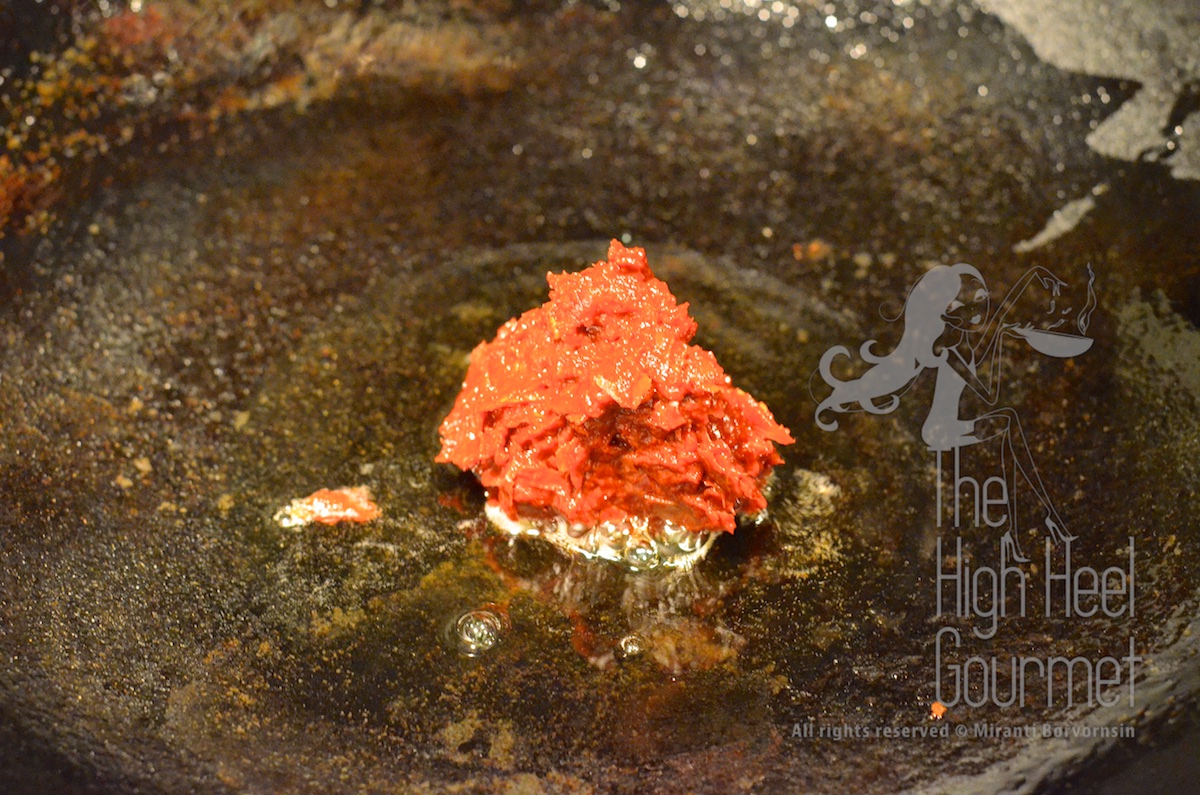
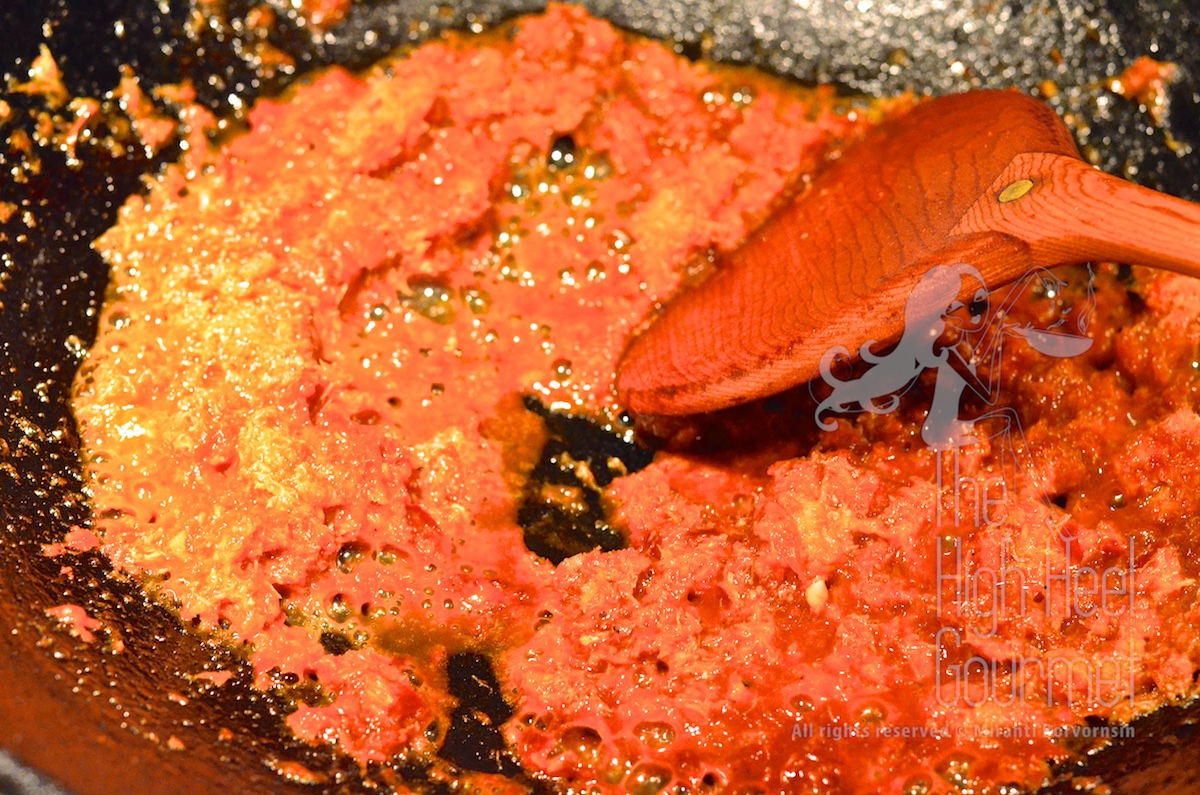
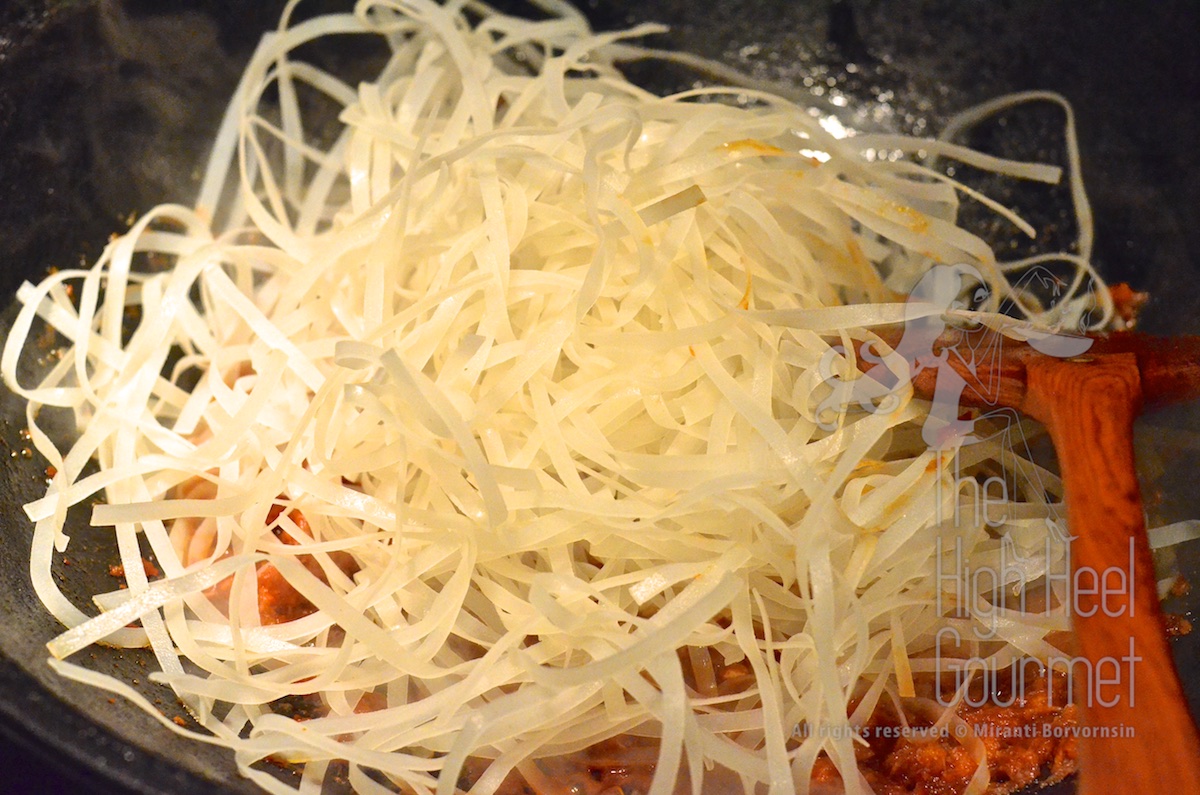
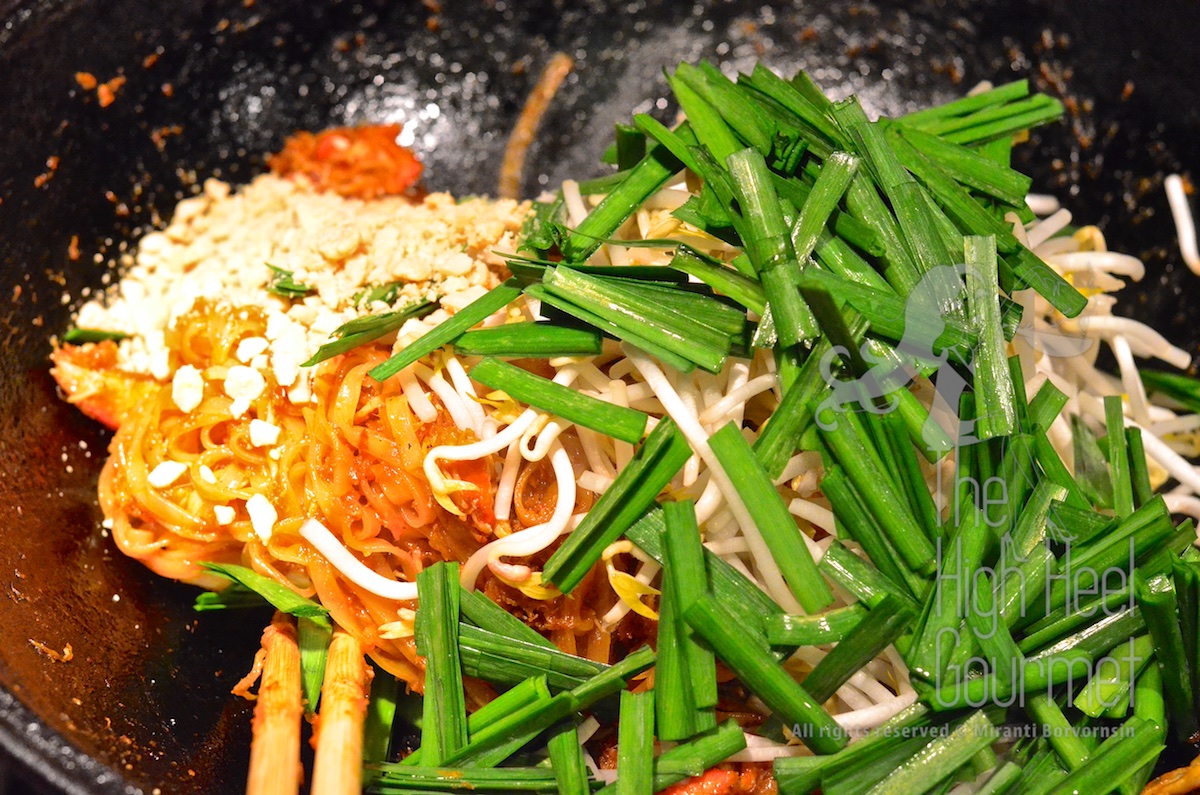
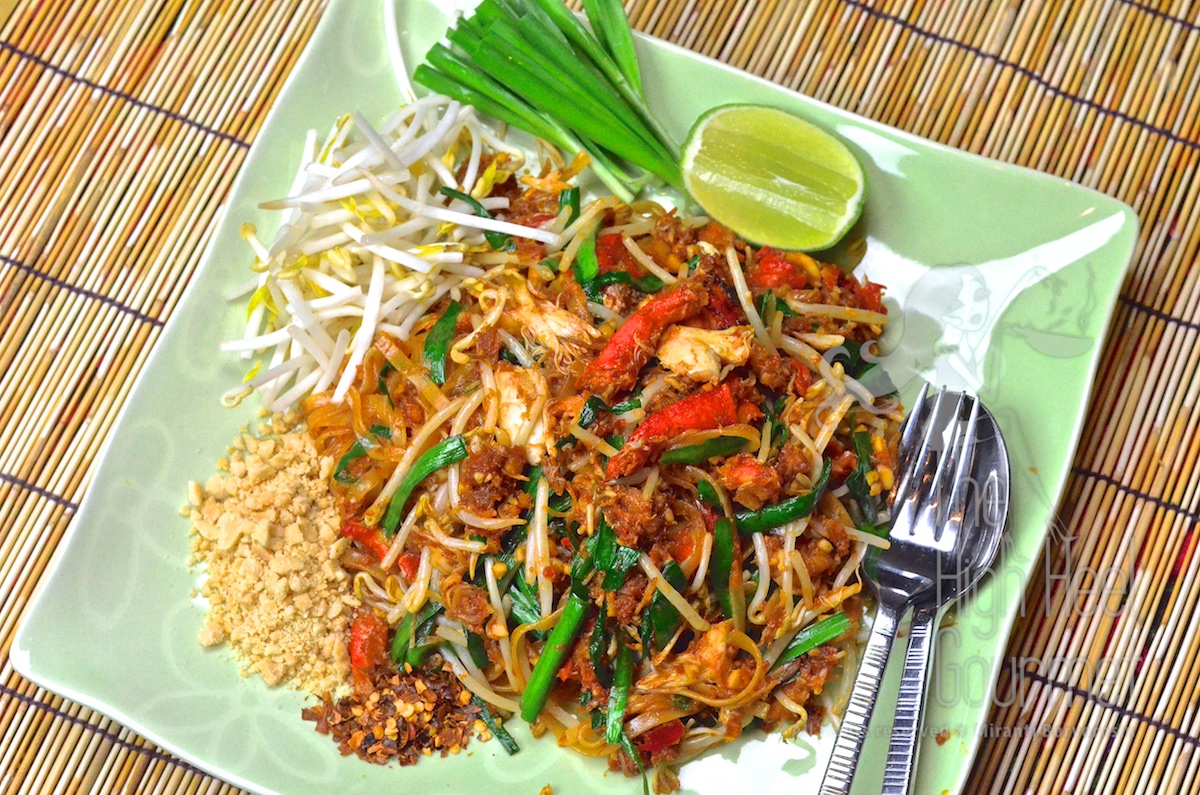
Reblogged this on The ObamaCrat™.
Thanks 🙂
U have a wonderful blog and great post.
Reblogged this on TGM.
Thanks 🙂
Looks tasty.
Try it. It is quite flavorful!
I doubt I can get all the ingredients up here; I will have to content myself with ordering some next time I fly out.
Gotta love Thai food..
🙂
So much good padThai!
🙂
This looks beautiful! I completely understand your desire to keep things authentic. That’s why I enjoy learning from you!
Thanks Chef Mimi 🙂
I love Pad Thai. Thanks for sharing this recipe! Gonna try it out… Mrs. J
Let me know how it turns out!…you can post pictures on my Facebook page. 🙂
Hi Miranti, I love your blog! I’ve never prepared Pad Thai before and this seems complicated enough to start with. As I’ve never been to Thailand, I don’t have a ‘feel’ for what I’m doing (as I have with Italian food) so I need a lot of practice. Thanks for your very clear and elaborate explanations. Garlic chives are not known around here. Can I substitute with regular chives or spring onions without making Thai barf? 😉
Yes, you can but use it less than garlic chives. I would say cut the portion down in half if you want to use green onion. They do that at the restaurants here in the US too. I won’t barf but I’m so use to garlic chives and they are available around here. If you use the green onion or chives don’t save the bottom to eat fresh, just put them all in stir-fried with noodles.
Check at the Chinese groceries in Amsterdam if you want to know garlic chives and going in town. It’s called “gu chai” in Chinese language. I used to get them from there.
Thanks so much, I’ll look for gu chai. Often at the Chinese groceries they do not understand Dutch and I have to show them Chinese characters on my phone 😉
韭菜
My friend sent me this when I asked her how the Gu Chai spell in Chinese. I hope it is the right one. I can’t read Chinese!
Neither can I, but I think the second character means vegetable. It was in Sybaritica’s food chinese 101 last weekend if I remember correctly.
Try it at the Chinese grocery and let me know. As soon as I’m back in LA I will try too. (Or may be just try it here in Hawaii. There are a lot of Chinese too! I will let you know.)
PS The finished dish looks delicious, so vibrant!
Love the plating! It looks very attractive. I have couple of Thai food fans at home and we get all the ingredients in our Asian market. So I would like to try this and surprise my folks.
Our supermarkets are flooded with many Thai food products lately. One of the most popular ones are the ready to use Padthai seasoning that comes in bottles. It is very affordable and it tastes pretty good (I can’t stop myself from buying one!)
I can tell for sure that it is not as authentic as the padthai recipe you shared in a previous post!
😀
It is so wonderful that you wrote “deeper” about padthai. Wikipedia should have asked you to update their Thai food articles!
Some of the PadThai sauce aren’t so bad but most of them have ground up dried shrimp, salted turnip, tofu and shallot. Those proteins caused the manufacturer to put preservative. Some of them has chilies and MSG too. I never use them. My husband thought I should buy them all and rate them for my readers. I think if I can really get ALL of them, I might. I just can’t really eat the one that contained preservative and MSG. Watch out for that. The good one should have only 3 ingredients, palm sugar, fish sauce, tamarind pulps.
I keep updating Wiki Thai food page in the past Hari but then there will be other people come in and changed the content! I don’t know if you ever watch wiki Satay page. I did updated it once and someone came in and change the history that satay was originated in Malaysia when it actually was originated in Indonesia! PadThai too, there is one person trying really hard to make PadThai originated in Vietnam! (It is as wrong as someone trying to make Panang curry came from PeNung island of Malaysia!) The way Wikipedia set up, anyone can update. I’m tried of having to keep watching and change, so I give up. At least, this blog is a place that no one can change but ME!
You are right. I should have checked if it contained MSG! I’m gonna be more careful!
I have always found funny things and questionable facts in Wikipedia from time to time. I find it very upsetting but I have never tried to edit them.
Just like you do, I prefer writing my own versions or perspectives of things in the blog. 🙂
(it feels so over-achieving when I write things that have not been written in Wikipedia! L-O-L!!!)
We love pad thai! Thanks for your continued sharing of good foods. Thanks as well for your support and likes to our Blog!
Beautiful photos!! I think I can make this thanks.
I pay a visit daily some web pages and sites to read posts,
however this weblog gives quality based posts.
Hello to every body, it’s my first visit of this website; this weblog
carries amazing and genuinely excellent material in favor of readers.